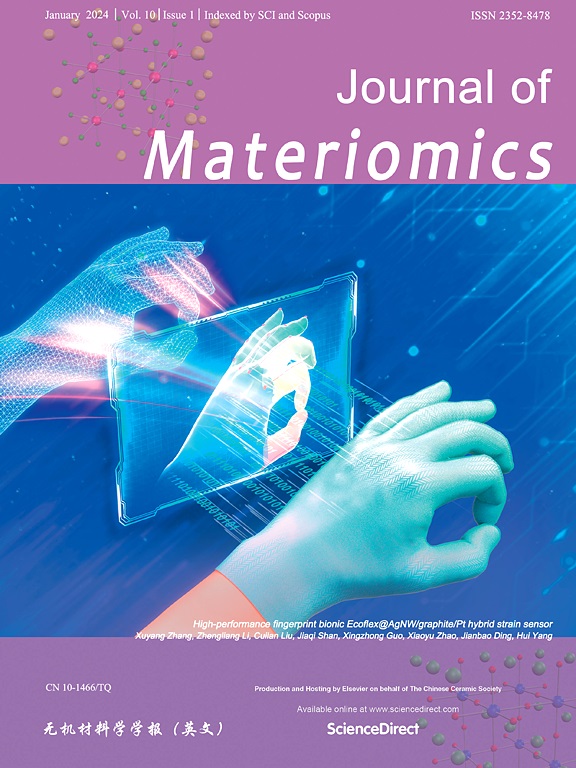硅掺杂氧化镓中显著的声子局域化和传输抑制:使用统一神经网络原子间势的研究
IF 8.4
1区 材料科学
Q1 CHEMISTRY, PHYSICAL
引用次数: 0
摘要
本文章由计算机程序翻译,如有差异,请以英文原文为准。

Significant phonon localization and suppressed transport in silicon-doped gallium oxide: A study using a unified neural network interatomic potential
Monoclinic gallium oxide (β-Ga2O3) is a fourth-generation semiconductor with great application potential in high-power microelectronics. Recent studies indicate that the electrical conductivity of β-Ga₂O₃ can be substantially enhanced through silicon (Si) doping. However, the effects on thermal transport, especially by considering the practical nanostructures within the crystal, have not yet been explored. To address this gap, we have developed a unified neural network potential for investigating the unexplored phonon transport of the β-(SixGa1–x)2O3 with varying doping levels. Our atomistic simulations showed that compared to intrinsic β-Ga2O3, the room-temperature thermal conductivities respectively decreased by 36.5%, 33.5%, and 38.8% along the a, b, and c axes in β-SiGa511O768, and by 79.6%, 74.9%, and 77.8% in β-SiGa7O12. The significant degradation in phonon transport is attributed to increased lattice anharmonicity, reduced sound velocity, and most importantly, induced phonon localization due to Si substitutions. A quantitative analysis reveals that the localization primarily occurs in phonons with frequencies exceeding 2.5 THz. The vibration is confined to a region around the Si atom, extending only to its second-nearest neighbors.
求助全文
通过发布文献求助,成功后即可免费获取论文全文。
去求助
来源期刊

Journal of Materiomics
Materials Science-Metals and Alloys
CiteScore
14.30
自引率
6.40%
发文量
331
审稿时长
37 days
期刊介绍:
The Journal of Materiomics is a peer-reviewed open-access journal that aims to serve as a forum for the continuous dissemination of research within the field of materials science. It particularly emphasizes systematic studies on the relationships between composition, processing, structure, property, and performance of advanced materials. The journal is supported by the Chinese Ceramic Society and is indexed in SCIE and Scopus. It is commonly referred to as J Materiomics.
 求助内容:
求助内容: 应助结果提醒方式:
应助结果提醒方式:


